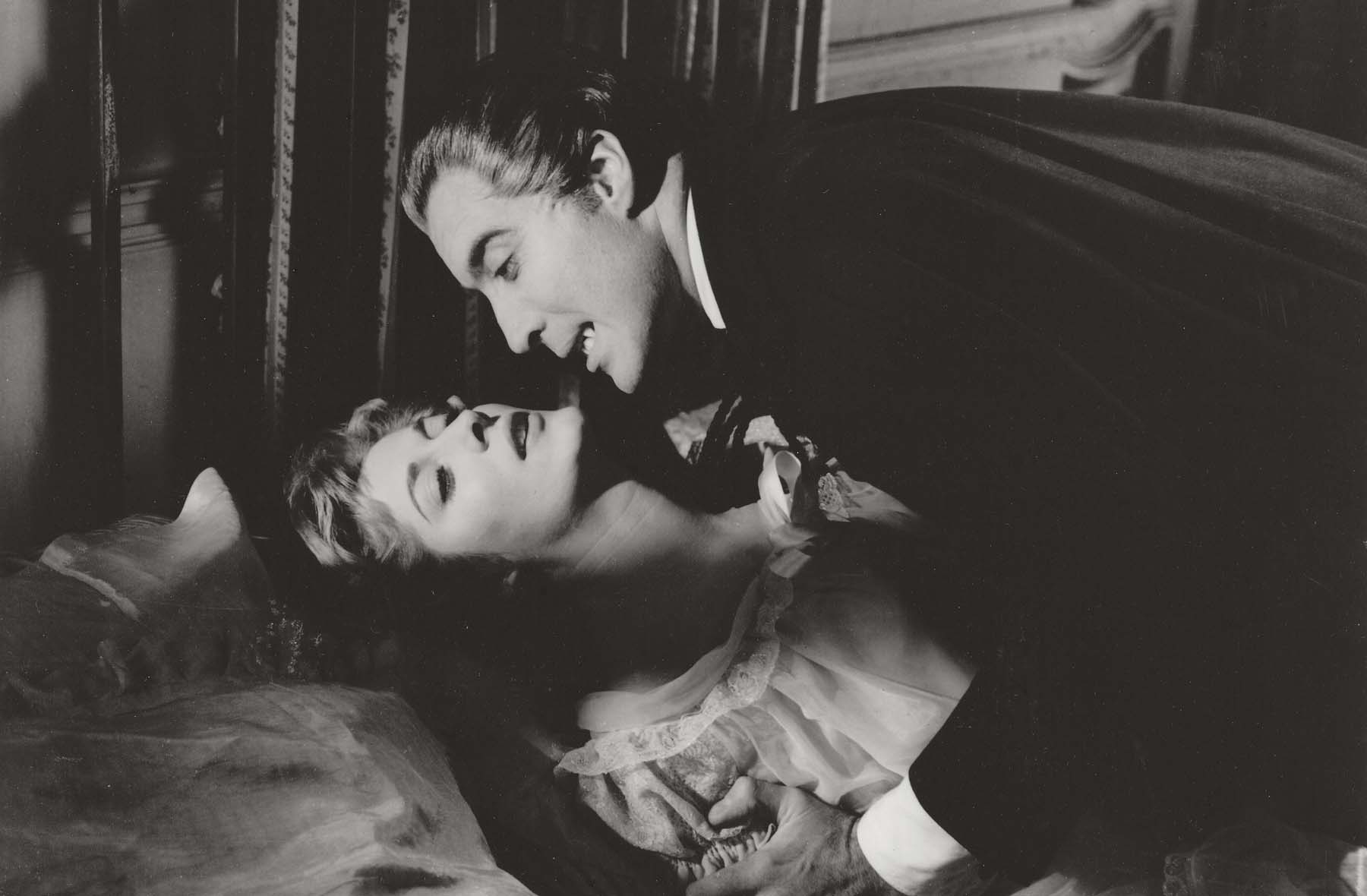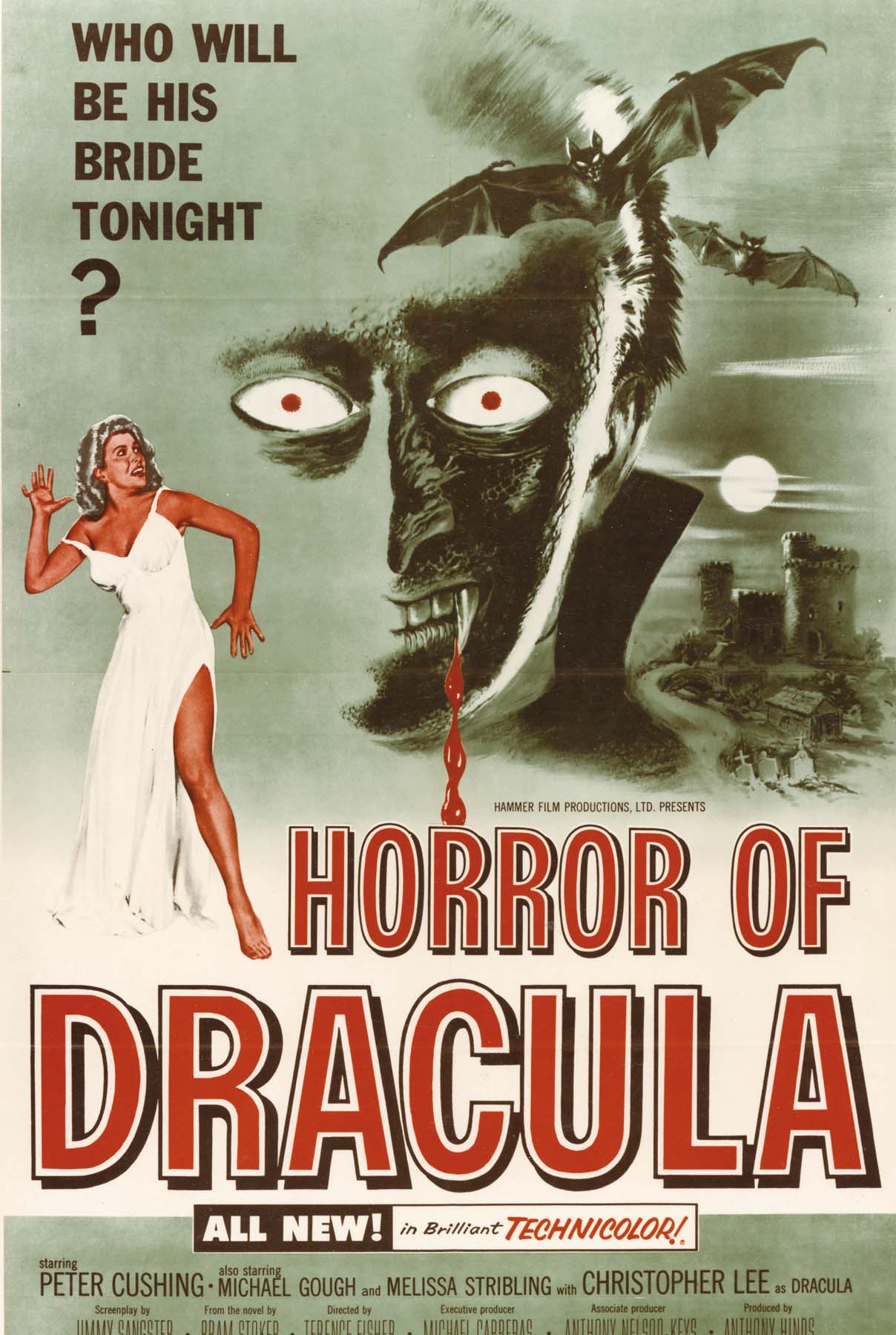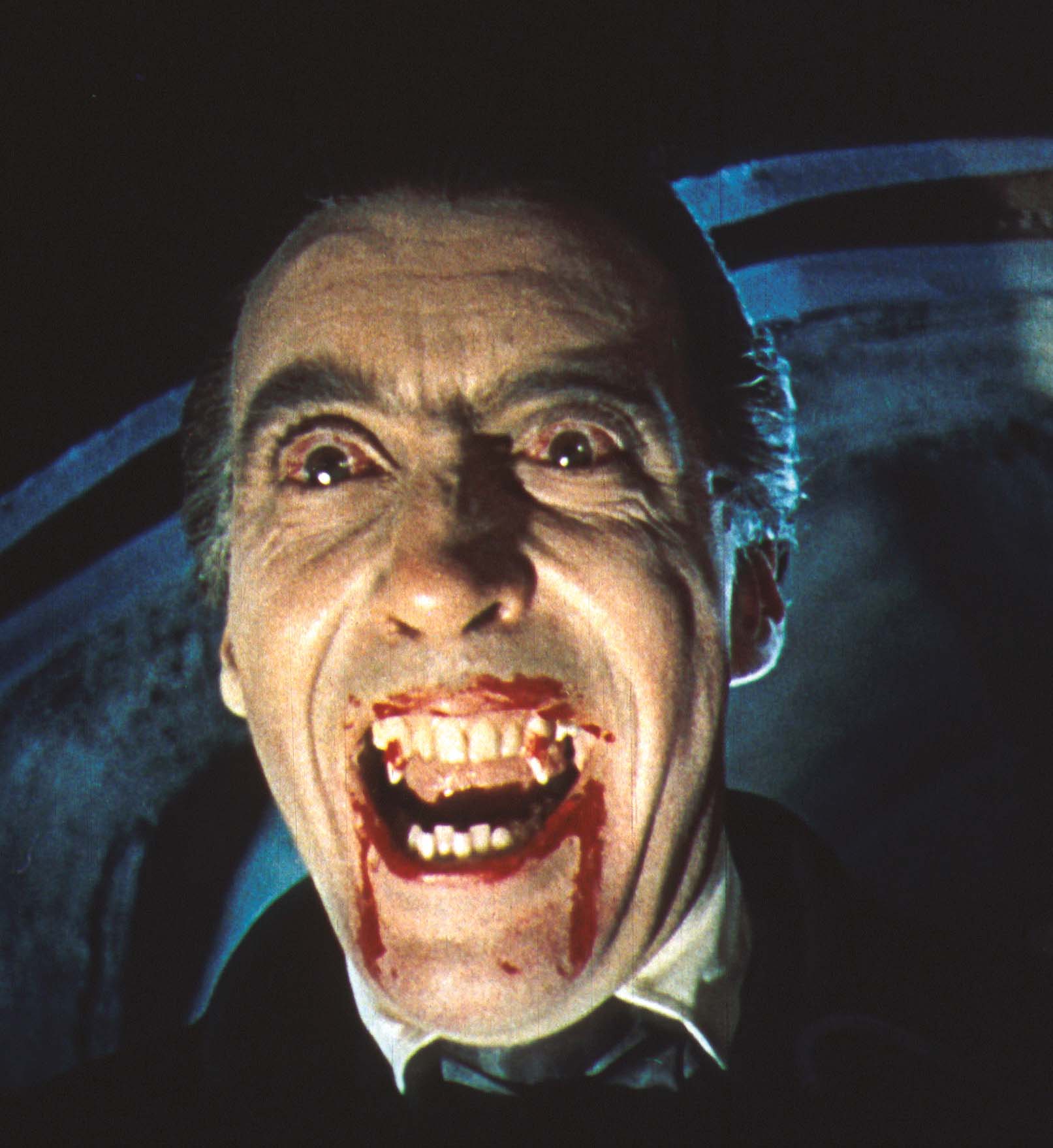A STREAMLINED APPROACH TO A CLASSIC TALE TRANSFORMED VAMPIRE MOVIES FOREVER.
Horror of Dracula (known simply as Dracula in the UK) is both a landmark adaptation of Bram Stoker’s novel and the film that locked in place the Hammer Films formula for fright—a style that changed the course of scary cinema. The Curse of Frankenstein had been a huge international success, and Hammer rapidly reassembled a winning team: director Terence Fisher, screenwriter Jimmy Sangster, and actors Peter Cushing and Christopher Lee.
Upon reading Sangster’s script, the British Board of Film Censors made no attempt to hide its contempt. “The uncouth, uneducated, disgusting and vulgar style of Mr. Jimmy Sangster cannot quite obscure the remnants of a good horror story,” the board wrote to producer Anthony Hinds, “although they do give one the gravest misgivings about treatment.… The curse of the thing is Technicolor blood.” Why, the censors wondered, “should vampires be messier feeders than anyone else?”
Sangster actually takes a shrewd scalpel to the original story, collapsing the geographical sweep of Stoker’s novel, which takes place in multiple locations and countries (as well as at sea), and setting the story economically in an unnamed European principality in 1885. Dr. Seward’s asylum is completely removed, Seward’s role is reduced to a walk-on (the part was larger in the script), and the usually iconic character of Seward’s patient Renfield is excised.
As in many adaptations of Dracula, the characters and their relationships are arbitrarily shuffled and reconfigured. Stoker’s Mina is Lucy’s friend in the novel, but in the film they are sisters-in-law. And here Lucy is engaged to Jonathan Harker, Mina’s fiancé and later husband in the book. Unlike in the novel, Harker is not a solicitor who travels to Dracula’s castle to sell him real estate, but rather a vampire hunter who penetrates the count’s home in the guise of a librarian hired to organize and catalog Dracula’s books.

Dracula’s bedroom scene with Mina (Melissa Stribling) was originally vetoed by British censors.


Dracula’s first full-color, full-fanged close-up was a game-changer for horror movies.
The count (Christopher Lee) is, to all outward appearances, an urbane and attractive aristocrat as well as a gracious host. A young woman (Valerie Gaunt) in Grecian-style attire furtively approaches Harker (John Van Eyssen) in the library, pleading for help to escape Dracula. Harker agrees to protect her, and she throws her arms around him, seemingly in gratitude, but really to bite his neck with fang-like incisors. As Harker pulls away in shock, Dracula suddenly enters the room in one of the most startling and famous close-ups in horror movie history. His eyes are wide and bloodshot, his open mouth and bared fangs smeared and dripping with gore. He leaps over the library’s table, grabs the woman by the arm and throws her to the floor. They snarl like wild animals in a territorial standoff. Harker tries to pull them apart and is nearly strangled by Dracula, who finally renders the vampire woman unconscious and carries her off. Harker knows that her bite has condemned him to undeath, but he sets himself to the grim task for which he has come.